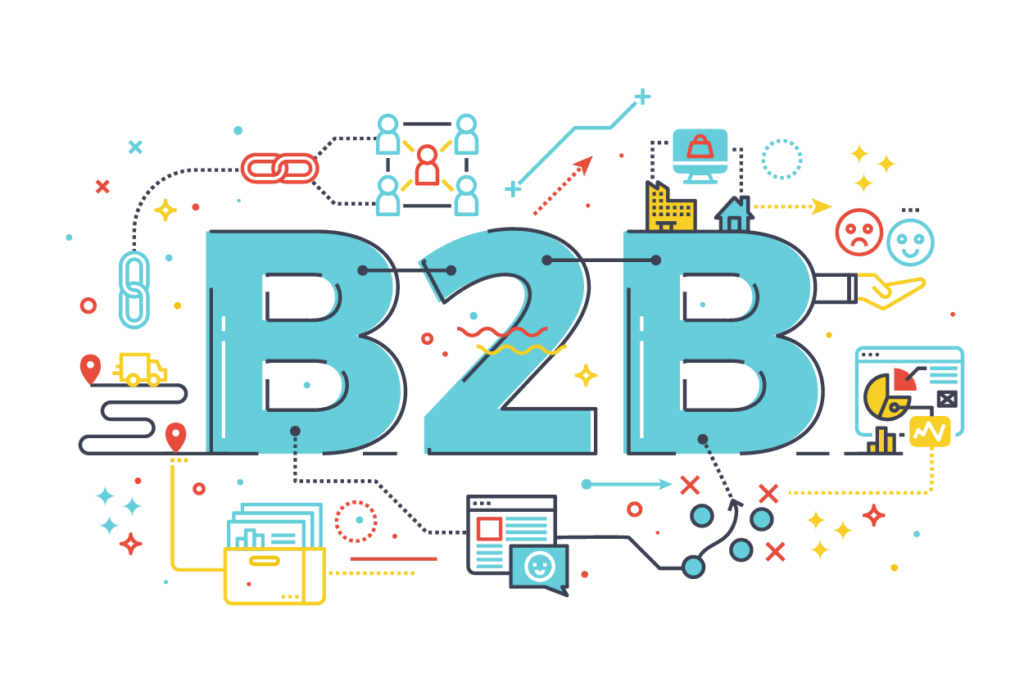Google Ads for B2B

People often think of Google Search ads as best served from businesses to individual consumers. While B2C is typically a great fit, Search ads are equally good (and sometimes more effective with the right approach) for business to business industries. Here we dive into some food for thought in the strategy, set up, management, and optimization of B2B Google Ad campaigns.
B2C vs. B2B campaigns
The main difference between a business to consumer campaign and business to business campaign is how we hone in and specify our audiences. Let’s take the plumbing industry as an example. A residential plumber wants to show up on Google Search broadly, reach as many individuals and get as many relevant clicks, inquiries, or calls as possible to generate business. On the other hand, take a plumbing warehouse that sells supplies to plumbers. Using the same strategy would get them a lot of inquiries from homeowners needing plumbing services, rather than plumbers who own businesses and need the supplies and tools of their trade. This boils down to wasted learning, time, and dollars on the wrong audience. This is why you should:
question Google’s automated suggestions for B2B
You often need to question Google’s automated suggestions due to its lack of understanding the context of a B2B campaign. When you let Google’s automated campaigns roll, it will almost always try to broaden the keyword set because it has a hard time understanding specific or niche audiences. Its AI brain has a tendency to think more is better, when in reality more of the wrong thing is not what we’re going for.
Another example of AI running amuck is assigning conversions that don’t make sense for a particular scenario. Let’s stick with our plumbing supply warehouse example. The purpose of many brick and mortar warehouses is only to fulfill orders and ship products to customers, while their customer support offices are in a completely different location. Let’s say you’ve assigned Performance Max to your warehouse campaign. It decides phone calls are very easy to generate for this location and suggests the physical address should be published online. Google’s AI believes this a successful campaign because it is delivering beautifully on conversions and is providing consumers with more information. Unfortunately, because Google is lacking context it doesn’t realize that these are the wrong conversions. The result is actually burdening the warehouse and causing them to field phone calls they don’t have staff for and turn away in-person visitors that should be going to the customer support office. Next you want to:
dial in your keywords
Keywords can make or break an SEM campaign in any circumstance. This is especially true in B2B scenarios where we want to help make it clear to individual consumers that the ads they’re seeing are not for them–they’re for businesses.
In a B2C campaign, we often broaden our keywords and provide as many possible word combinations we might expect a consumer to use when searching for a product or service. Conversely when you’re targeting businesses, it’s important to make sure that the keywords in your SEM plan are more specific and contain industry-speak. People searching who have a certain level of industry understanding are likely to be a more qualified audience. You’ll also want to be sure to qualify every keyword and ad, not just a couple of headline options with open keywords.
Typically Google uses responsive search ads and gets better results when it takes out qualifiers. With B2B ads we sometimes actually want to qualify with the ad copy. For example, one client offering meeting places to businesses qualified their copy like this: “Great facilities & Locations to Host Your Next Conference or Event.” While this will garner a low CTR, the people who do click are more likely to be our target audience.
Another useful strategy in setting up your keyword plan is to use Phrase or Exact match to be sure you’re only receiving visitors who are truly looking for your product. The downside to this tactic is that you lose the opportunity for some information gathering and learning the way you might in other campaigns where you start more broadly, learn, and scale back as you go. Your ads and keywords do the qualification for you and by the time a prospect gets to your landing page, they’re more likely to be the client you’re looking for. Speaking of the client you’re looking for:
be wary of “bonus leads”
A B2B focused strategy typically hones in on industry keywords and avoids AI for lack of context. One way you might see a B2C campaign masquerading as B2B, is when digital providers talk about generating “bonus leads.”
The more narrow the audience is, the more you really have to qualify keywords and ads on the front end to get the best results. Business to business campaigns can’t really take a lot of chaff. So if you’re being promised a lot of clicks and impressions, it’s likely your ads are getting a lot of top of funnel traffic that doesn’t actually work for you. For example, let’s say you’re in economic development looking to get businesses in specific industries to move to your community. You know that the pool of candidates eligible to make this move is relatively small. If you receive an estimate for impressions in the hundreds of thousands and clicks in the tens of thousands, chances are your money is being wasted on irrelevant impressions that don’t further your goals. This might be a sign that this digital agency has a hands off approach and is letting Google’s automation run its campaigns.
At the end of the day, our biggest recommendation is: don’t give the keys to your B2B campaign over to Google and let it make decisions if the audience is niche. While they can sometimes go astray even on B2C campaigns, in any campaign with very specific audiences – tailored and manual is best.
Go forth. Go digital.
-cohort.crew



